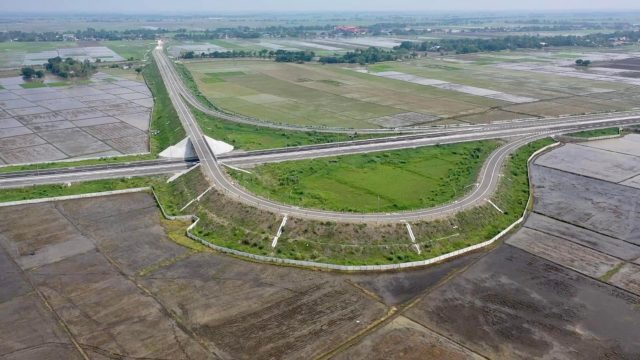CITY OF SAN FERNANDO — The 30-kilometer Central Luzon Link Expressway
(CLLEX) is now 96 percent complete, the Department of Public Works and
Highways reported.
Undersecretary for Unified Project Management Office Operations Emil Sadain
disclosed that the first 18 kilometers of CLLEX from Tarlac Interchange at the
connection of the SCTEX and the TPLEX in Balingcanaway, Tarlac City to Guimba-
Aliaga Road in Aliaga, Nueva Ecija will be extended with additional 11 kilometers
by March 2023 to include seven kilometers up to San Juan Interchange, and four
kilometers to Umangan-Julo Road at the boundary of Aliaga and Cabanatuan City
before Felipe Vergara Road and Daang Maharlika Highway.
Sadain and UPMO-Roads Management Cluster 1 project director Benjamin
Bautista inspected on July 22 continuing works in the construction of the four-
lane expressway including interchanges, overpasses and underpasses from Aliaga
Section to Cabanatuan Section whose progress were stalled in the past due to
unworkable portions with problem in the acquisition of road right of way.
CLLEX is part of the Luzon Spine Expressway Network which is aimed at reducing
travel time from the northernmost part of Luzon, Ilocos, to the southernmost
part, Bicol.
Other than cutting travel time between Tarlac and Nueva Ecija, the partial
opening in 2021 of CLLEX provided options to motorists and spread out traffic
better resulting to reduce transportation costs, benefitting farmers of the Central
Luzon and Cagayan Valley regions.
“The CLLEX Project will support the country’s new vision for improving agricultural
productivity under the administration of President Ferdinand Marcos Jr. Using
this toll-free high standard highway, palay crops and other products from Nueva
Ecija, the Philippines’ rice granary, including those coming from Region 2 can
reach the market centers in Metro Manila much faster and cheaper,” Sadain
noted.
An extension of the SCTEX and TPLEX, CLLEX will form an important east-west link
for the expressway network of Luzon to ensure a continuous seamless traffic flow
for the motoring public from Metro Manila and vice versa passing thru NLEX,
SCTEX, and TPLEX.
Once fully operational, the P11.811-billion infrastructure is expected to shorten
the usual travel time of 70 minutes between Tarlac City and Cabanatuan City to
just 20 minutes.
With funding assistance from the Japan International Cooperation Agency, it will
also facilitate better access to economic hubs and areas of employment in Region
3 such as Clark and Subic. — Carlo Lorenzo J. Datu/PIA-3





